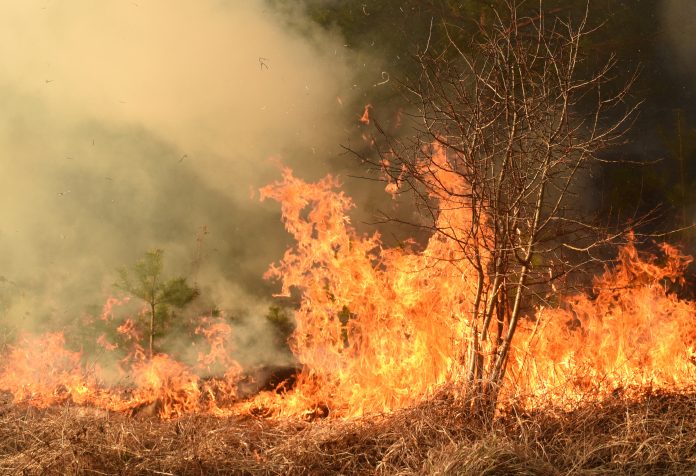Temperatures in Siberia have risen to a record average for June in a heatwave that has produced some of the worst wildfires the region has ever seen
European Union data shows that temperatures have been more than 5C higher than the average Siberian Arctic temperatures for June, with an all-time record high of 38C recorded in Verkhoyansk, a Siberian town.
Although hot summers are not unheard of in Arctic Siberia, recent months have seen abnormally high temperatures. The EUs earth observation programme, Copernicus, described the record temperatures as a ‘warning cry’.
The Arctic is said to be warming twice as fast as the global average. The persistent heatwave this year in the Siberian Arctic Circle has worried scientists. In March, April and May, Copernicus reported that the average temperature was around 10C above normal.
According to the Russian Forestry Agency, as of July 6, there have been 246 forest fires covering 140,073 hectares. An emergency situation has been declared in seven regions of Russia. Copernicus said the fires had surpassed the record number of blazes seen in the region in the same month of last year.
Carlo Buontempo, Copernicus director, said: “Siberia and the Arctic Circle are prone to large year-on-year temperature fluctuations, but the persistence of this year’s warm spell is very unusual. What is worrisome is that the Arctic is warming faster than the rest of the world”.
Average temperatures have risen by more than two degrees C across the Arctic since the mid-19th century, twice the global average.
Why should we be concerned?
Warming temperatures in the Siberian Arctic is leading to the thawing of once permanently frozen permafrost below the ground.
This is causing concern amongst scientists because as permafrost thaws, carbon dioxide and methane previously locked up below ground is released.
According to a paper published by Purdue University in Indiana, the warming climate in the Arctic means that lakes are covered by ice for shorter periods of time. This is leading to an increase in methane emissions, a greenhouse gas that traps 32 times more heat than carbon dioxide.
Methane, trapped in the organic matter at the bottom of Arctic lakes, is released into the atmosphere when lakes become ice-free. The amount of methane released by Arctic lakes could rise to as much as 60% of all methane released due to warming temperatures in the Arctic region by the end of the century.
These greenhouse gases can cause further warming, and further melting of permafrost, in a vicious cycle known as positive feedback. This will also cause land ice to thaw faster, causing greater run-off into the ocean, contributing to sea-level rise.
Scientists also believe that the drier soil has contributed to increased wildfires, which in June this year surpassed the previous record, set in June 2019. The fires have been concentrated in the far northeast Siberia. Fires have also been increasing in other parts of the Arctic including Alaska and the Yukon Territories and in Canada, resulting in the high levels of carbon emissions.
Mark Parrington, a senior scientist from Copernicus, commented: “Higher temperatures and drier surface conditions are providing ideal conditions for these fires to burn and to persist for so long over such a large area”.











